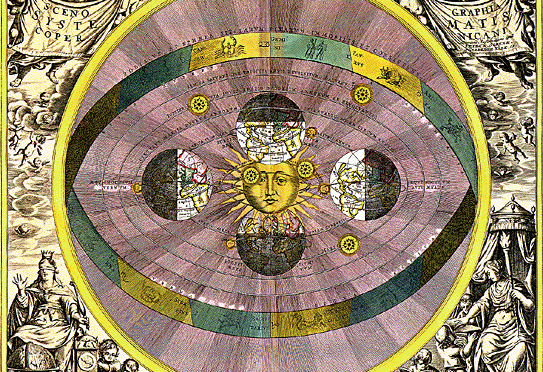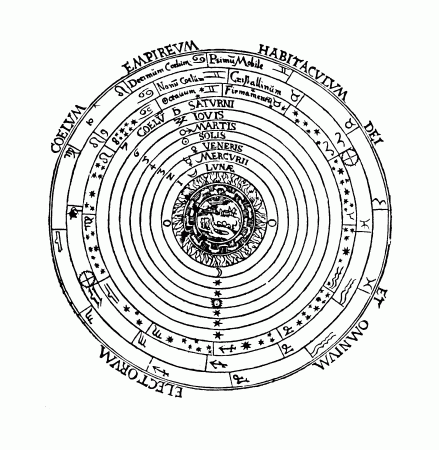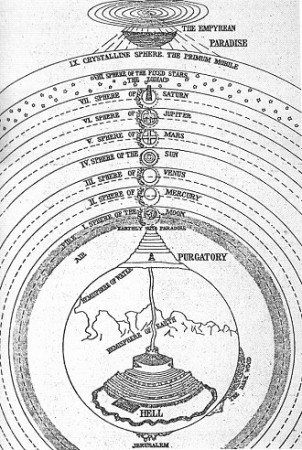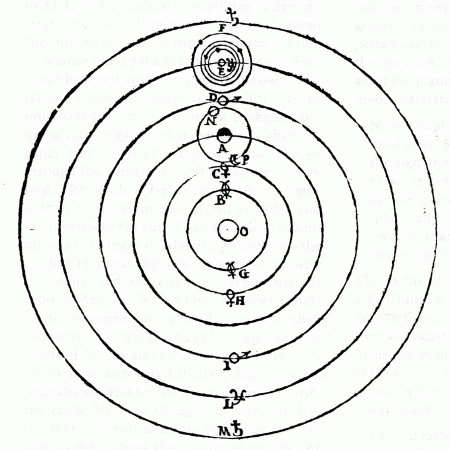Sequel of the preceding post A Brief History of Space (1/4).
The cosmology of Aristotle, as perfected by Ptolemy and reintroduced thanks to arabic translations and commentaries, was adapted to satisfy the demands of the theologians. Notably, that which is situated beyond the last material sphere of the world acquired the status of, if not physical, at least ethereal or spiritual space. Baptized “Empyrean”, it was considered to be the residence of God, the angels and the saints. The medieval cosmos was not only finite, but quite small: the distance from the Earth to the sphere of the fixed stars was estimated to be 20,000 terrestrial radii, because of which Paradise, at its edge, was reasonably accessible to the souls of the deceased. The Christian naturally found his place at the center of this construction.
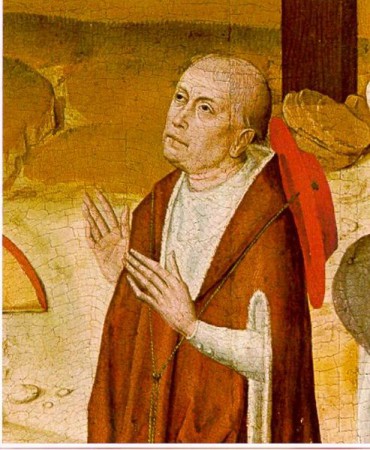
This model of the universe imposed itself until the seventeenth century, without nevertheless impeding the resurgence of atomist ideas. After the rediscovery of the manuscript of Lucretius De rerum natura, the German cardinal Nicholas of Cusa (1401-1464) argued in favor of an infinite Universe, of a plurality of inhabited worlds, and of an Earth in motion. However, his arguments remained primarily metaphysical: the universe is infinite because it is the work of God, who could not possibly be limited in His works.
When the Polish canon Nicolaus Copernicus (1473-1543) proposed his heliocentric system, in which the Sun is at the geometric center of the world while the Earth turns around it and around itself, he kept the idea of a closed cosmos, surrounded by the sphere of fixed stars. Even if this is two thousand times further away than in the Ptolemeian model, the universe nevertheless remained bounded.
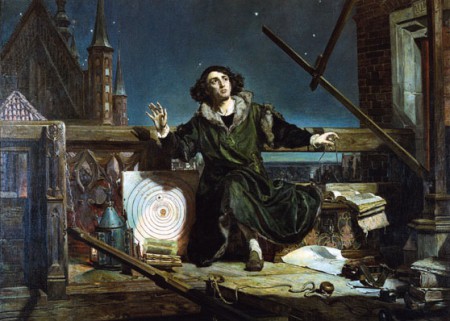
We must wait several decades more for the first cracks to appear in the Aristotelian edifice. In 1572, a new star was observed by the Dane Tycho Brahe (1546-1601), who showed that it was situated in the sphere of fixed stars, that is to say in the celestial region until then presumed to be immovable. In 1576, the Englishman Thomas Digges (1545-1595), a staunch Copernican, maintained that the stars were not distributed on a thin layer, at the surface of the eighth and last sphere of the world, but extended endlessly upwards. Digges nevertheless was not proposing a physical conception of infinite space: for him, the sky and the stars remained Empyrean, God’s realm, and in this regard did not truly belong to our world.
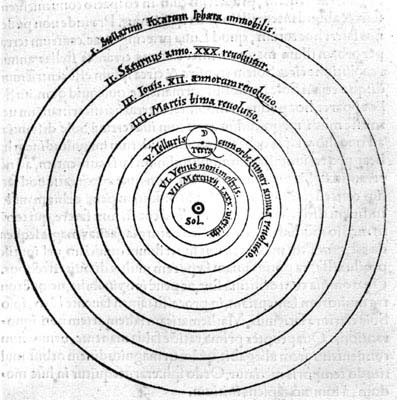 | 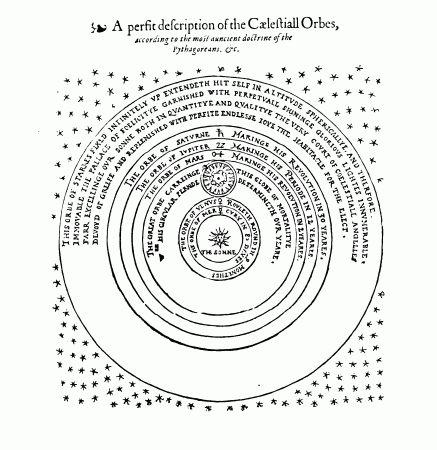 |
An epistemological rupture[1] was triggered by two Italian philosophers. In 1587, Francesco Patrizi (1529-1597) produced Of Physical and Mathematical Space[2], where he put forth the revolutionary idea that the true object of geometry was space in itself, and not figures, as had been believed since Euclid. Patrizi inaugurated a new understanding of infinite physical space, in which it obeyed mathematical laws and was therefore accessible to understanding. But it is above all his contemporary Giordano Bruno (1548-1600) who is attributed with the true paternity of infinite cosmology. 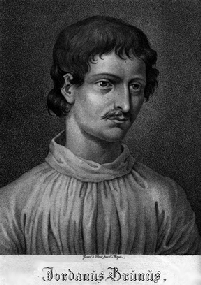 The first book of his De immenso is entirely dedicated to a logical definition of infinite space. Bruno argued from physical, and no longer exclusively theological, basics. His cosmological thought was inspired by the atomism of Lucretius, the reasoning of Nicholas of Cusa, and the Copernican hypothesis. From the latter, Bruno retained heliocentrism and the ordering of the solar system, but rejected the cosmological finitism. A precursor to Kepler and Newton, he also refuted the cult of sphericity and of uniform circular motion for describing celestial motion. His bold and original writings were not understood by his contemporaries, most notably Galileo. Above all they were firmly opposed by the Church. In fact, the true philosophical subversion of the end of the sixteenth century did not reside so much in the heliocentric affirmation of Copernicus as in that of the infinite multiplicity of worlds. Camped at the front ranks of the anti-Aristotelian battle, Bruno, carried away by his passion for infinity, refused to abjure and was burned at the stake in Rome.
The first book of his De immenso is entirely dedicated to a logical definition of infinite space. Bruno argued from physical, and no longer exclusively theological, basics. His cosmological thought was inspired by the atomism of Lucretius, the reasoning of Nicholas of Cusa, and the Copernican hypothesis. From the latter, Bruno retained heliocentrism and the ordering of the solar system, but rejected the cosmological finitism. A precursor to Kepler and Newton, he also refuted the cult of sphericity and of uniform circular motion for describing celestial motion. His bold and original writings were not understood by his contemporaries, most notably Galileo. Above all they were firmly opposed by the Church. In fact, the true philosophical subversion of the end of the sixteenth century did not reside so much in the heliocentric affirmation of Copernicus as in that of the infinite multiplicity of worlds. Camped at the front ranks of the anti-Aristotelian battle, Bruno, carried away by his passion for infinity, refused to abjure and was burned at the stake in Rome.
Johannes Kepler (1571-1630), another great artisan of the astronomical revolution, tried at first to construct a universal model founded on the use of particular geometric figures: the regular polyhedra. He failed at this attempt; the ordering of planetary orbits as calculated did not correspond to the new experimental data collected by Tycho Brahe. After discovering the elliptical nature of the planetary trajectories, Kepler overturned the Aristotelian dogma of circular and uniform motion as the ultimate explanation of celestial movement. He nevertheless refused to follow Bruno in his arguments for the infinitude of the universe. He considered this notion to be purely metaphysical and, since it was not founded on 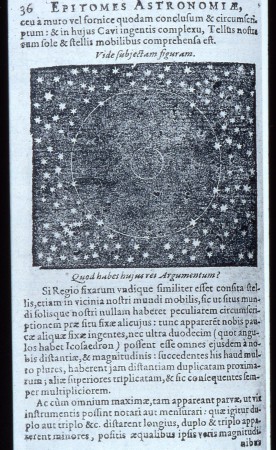 experiment, denuded of scientific meaning: “In truth, an infinite body cannot be understood by thought. In fact the concepts of the mind on the subject of the infinite refer themselves either to the meaning of the word `infinite,’ or indeed to something which exceeds any conceivable numeric, visual or tactile measurement; that is to say to something which is not infinite in action, seeing that an infinite measurement is not conceivable.”[3] Kepler supported his argument by expressing for the first time an astronomical paradox that seemed to be an obstacle to the concept of infinite space, and which would be extensively discussed: the “paradox of the dark night.” Just like the edge paradox, this problem would not be satisfactorily resolved until the middle of the nineteenth century, although by completely different arguments.
experiment, denuded of scientific meaning: “In truth, an infinite body cannot be understood by thought. In fact the concepts of the mind on the subject of the infinite refer themselves either to the meaning of the word `infinite,’ or indeed to something which exceeds any conceivable numeric, visual or tactile measurement; that is to say to something which is not infinite in action, seeing that an infinite measurement is not conceivable.”[3] Kepler supported his argument by expressing for the first time an astronomical paradox that seemed to be an obstacle to the concept of infinite space, and which would be extensively discussed: the “paradox of the dark night.” Just like the edge paradox, this problem would not be satisfactorily resolved until the middle of the nineteenth century, although by completely different arguments.
Starting in 1609, the telescope observations of Galileo (1564-1642) furnished the first direct indications of the universality of the laws of nature. On the question of spatial infinity, however, Galileo, like Kepler, adopted the prudent attitude of the physicist: “Don’t you know that it is as yet undecided (and I believe that it will ever be so for human knowledge) whether the Universe is finite or, on the contrary, infinite?” [4]
*************
[1] See Alexander Koyre, From the Closed World to the Infinite Universe, New York: Harper Torchbook, 1958.
[2] De spacio physico et mathematico ; See R. Brickman, “On Physical Space, Francesco Patrizi”, Journal of the History of Ideas, vol.4, 224 (1943).
[3] De stella nova, 1606. Unfortunately there is no English translation for this masterpiece.
[4] Letter to Ingoli, quoted in A. Koyré, From the Close World to the Infinite Universe, The John Hopkins Press 1957, p. 97.
